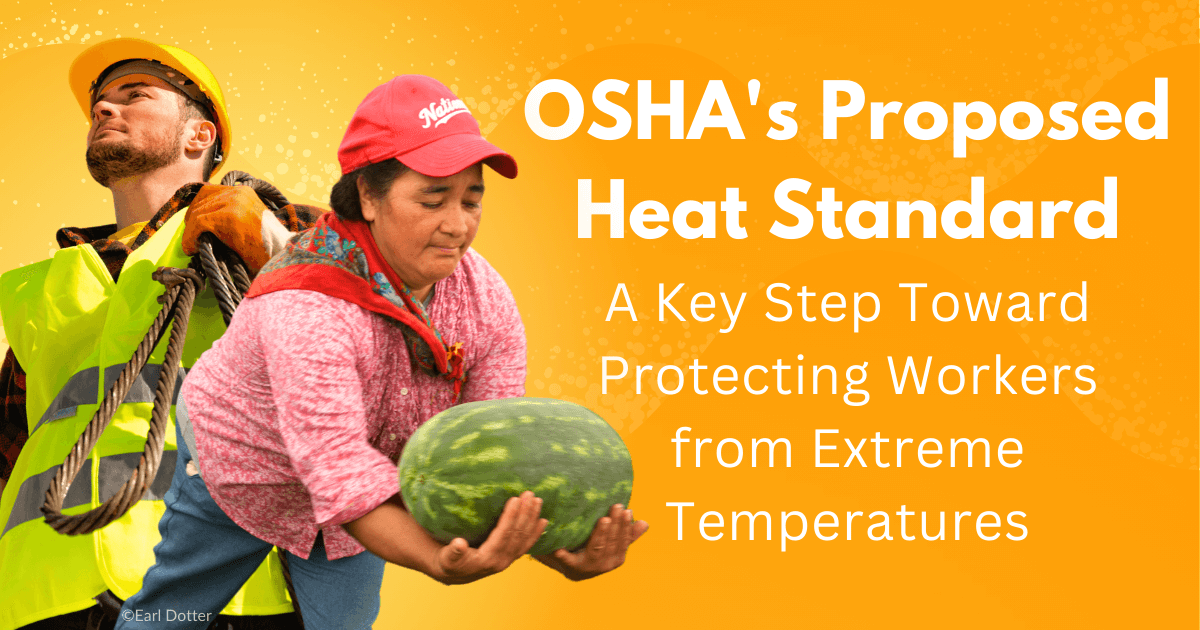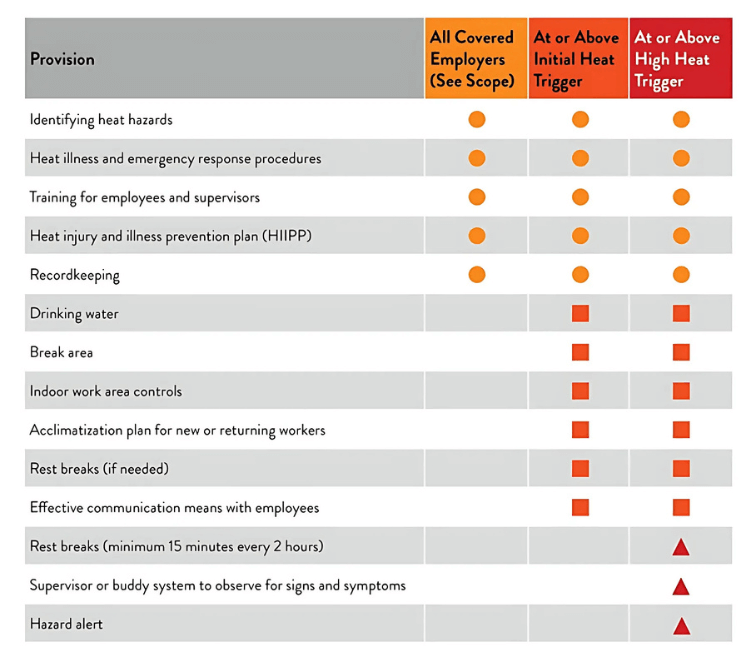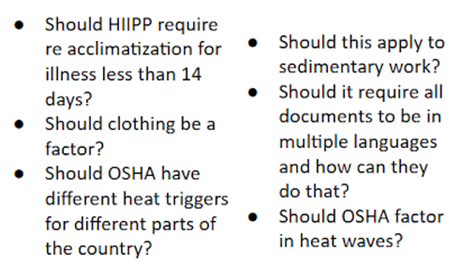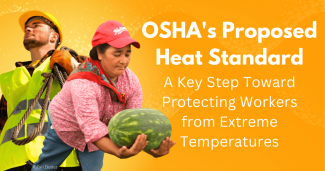OSHA's Proposed Heat Standard: A Key Step Toward Protecting Workers from Extreme Temperatures

[Editor’s note: Today’s blog comes from MCN’s intern, Ian Robertson. Robertson is a Junior at University of Texas at Austin triple majoring in Sustainability Studies, Anthropology, and RIM (Race, Indigeneity, and Migration). He is interested in climate change and how it disproportionately affects underprivileged communities. In this blog, Robertson shares more about heat-related illness and the proposed US Occupational Safety and Health Administration (OSHA) Heat Injury and Illness Prevention Plan. Comments on the plan are accepted until January 14.]
Extreme heat kills more people than hurricanes, floods, tornadoes, and lightning combined. Yet even with heat killing an average 1,300 people and injuring 3,389 more in the United States each year there are still no national policies to protect workers from heat-related illnesses. With climate change's increasing effects during the record-breaking summers, these numbers are projected to rise in the coming years. The lack of national policy puts the lives of workers at risk with migrant workers often being affected disproportionately. Migrants frequently work in industries that are more susceptible to heat-related illnesses and injuries, like construction and farmwork, where they are 13 times and 35 times, respectively, more likely to die from heat-related illnesses.
On August 30, 2024, the US Occupational Safety and Health Administration (OSHA) published the Heat Injury and Illness Prevention Plan (HIIPP) rulemaking in the federal register to address the issue. The standard, if enacted, would implement two heat triggers at 80 degrees and 90 degrees Fahrenheit and will implement protection measures. At 80 degrees, employers would be required to provide access to cool water breaks when needed in the shade, and acclimatization protocols for new and returning workers. At 90 degrees, employers would be required to provide workers fifteen-minute breaks every two hours, observe for signs and symptoms of heat-related illness, and develop a hazard alert for rising temperatures. Additionally, the HIIPP would require employers to conduct annual training on preventing and protecting against heat illnesses. Heating standards would be required in both indoor and outdoor workplaces.
The chart below is a summary of the proposed requirements of the OSHA heat rule.

In response to the HIIPP proposal, Migrant Clinicians Network offered comments. MCN supports a national heat standard and believes it will help protect migrant and immigrant workers' health and rights to a safe workplace. The proposed OSHA heat standard would protect workers and be an essential step toward reducing the number of heat-related deaths and illnesses. MCN recommends that OSHA reevaluate the proposed standard, which applies only to farms with over ten workers. The standard should apply to all farms that hire migrant workers, as they deserve equal rights and protection. MCN also commented that HIIP training should be provided in all employees' spoken languages, for ESL and non-English speaking employees. Training in multiple languages is vital to protect all workers regardless of their English proficiency. Finally, MCN recommended that OSHA require stricter standards for temperatures over 100 degrees. MCN believes implementing standards for 100+ degree weather is essential to prepare for rising temperatures.
OSHA’s HIIPP is currently still accepting comments on the proposed rule . MCN is working with farmworker advocates in order to best respond to the proposed rule. MCN encourages public comment on the policy to emphasize to regulators the critical nature of the rule. Below is a graph of OSHA requests for comments that MCN believes are within our area of expertise.

Comments are due on 1/14/25 and can be submitted here.
Recently a few major cities in Texas (including Austin and Houston) tried to pass their own heat protection laws in response to the increasing temperatures. The Texas state government responded to these regulations with a measure called HB 2127, nicknamed the “Death Star law”. The Death Star law prevents any city in Texas from creating their own heat illness prevention standards, but they are still required to respect federal OSHA regulations.
Policies such as these are why it is important that we pass federal policy to protect against heat illness. With the change in administration and the fact that this regulation is still in the initial comment stage we are predicting that it is unlikely to pass in the near future. However, there are still things we can do to implement the policy ourselves.
What Can You Do?
Advocate for regulation on the state and local level:
Currently six states (California, Washington, Maryland, Oregon, and Colorado, and, just last month, Nevada, although Nevada’s standard lacks heat triggers) have heat regulations for outdoor workers. Minnesota has an indoor heat standard. MCN believes state regulations are important in the absence of a federal regulation. You can look to Maryland for a recent example of a statewide heat stress illness prevention standard. Reaching out to your local lawmakers shows to them that this is an issue that their constituents care about.
Advocate for regulation at the company level:
The failure to implement heat illness prevention standards costs an average of $100 billion dollars in lost productivity. The proposed federal regulations are projected to reduce heat-related deaths by 95% and illnesses by 65% which could lead to increased labor supply, a decrease in sick days from heat-related illnesses, and the resultant increase in productivity. These regulations will significantly reduce heat-related illnesses, and days of work missed due to heat exposure, which would offset the costs of implementing the regulations. The economic effects of these regulations have been calculated by OSHA. There are projected costs for most major businesses listed in the linked document, but there are averages listed below:
- Economic costs for large business are broken down on pages 248-255: The average costs for complying with the standard per year are around $1,946.
- Economic costs for small businesses are broken down on pages 256-264: The average costs for complying with the standard per year are around $1,178.
MCN recommends that you reach out to local farms, construction companies, and other local businesses and inform them about the benefits of a proposed rule. Even if a local policy is not in effect, local businesses can still implement the standards in order to protect their workers and gain economic benefits.
In conclusion, while the standards are important on a federal level, they are equally important to fight for on local and state levels. The change in administration highlights just how important standards is to have in place on the local level. Standards protect workers' rights despite changes in political winds and will be vital in protecting workers against heat illnesses. The OSHA HIIP is in its initial comment stage until January 14th, and every comment counts.
- Log in to post comments
